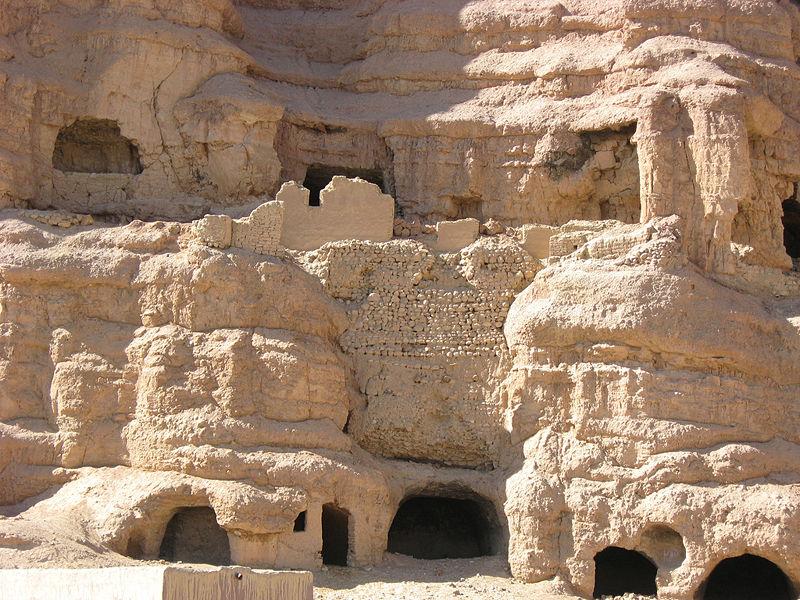The evolving myth of Bin Laden
Afghanistan caves (Photo: Tracy Hunter)
By Jason Margolis
President Obama has decided not to release photos of the body of Osama Bin Laden. He may be dead, but there’s a fight to control his myth, both in how he lived and how he died.
The life of Osama Bin Laden lends itself to myth: the young man who gave up a world of riches for a life of uncertainty and risk as a freedom fighter.
In the past decade, Bin Laden carefully crafted his own image. We’ve all seen the al-Qaeda videos of Bin Laden wandering through the mountains, a rugged ascetic waging holy war against the mighty United States.
That myth was shattered for many in the United States this week with the details of Bin Laden’s death.
Comedian Jon Stewart said it this way: “You know he was living in some staid and upscale Pakistani suburb for some time when we got him. You know this guy is out there preaching suicide bombings and jihad, pretending he’s Gandalf wandering the frontier, all the while living like one of the house wives of Orange County.”
And then there was the story of how Bin Laden actually died. Even in his final seconds, the US government was trying to cast Bin Laden as an anti-hero, said Matthew Baum, a professor of global communications at Harvard.
“Why is it that I know about the fact that, well if it’s a fact, that he tried to use one of his wives as a shield?” said Baum. “I can’t imagine that it’s an accident that I know that little factoid. It’s a great way to make him look cowardly.”
Complex story
Shortly after I spoke with Baum, the White House changed the story of how Bin Laden died, saying he did not use one of his wives as a human shield. And that Bin Laden was unarmed. I called Baum back after the story changed.
“It makes it a more complicated story, and complex is bad in the messaging business,” said Baum. “It makes it less unambiguously clean, heroic, good, whatever adjective you want to use. It makes it a little muddier.”
It’s hard to say whether US officials got the story mixed up or deliberately tried to spin the narrative. Had the story gone down the way we originally heard — a cowardly Bin Laden hiding behind his wife — it would have been a tidy ending to the narrative of Bin Laden.
Even though Bin Laden was already evil incarnate to most Americans, those last few moments still matter, said Paul Argenti, professor of corporate communication at the Tuck School of Business at Dartmouth.
“It’s a way to center anger, and to center people on the idea that a mission has been accomplished, to give the understanding that you can conquer evil, that the good guys win and the bad guys lose,” said Argenti. “I think there are a lot of things that go into that, and you don’t want that to end. The story will be: It started on Sept. 11 and it ended on May 1.”
In the Muslim world, the myth of Bin Laden’s death has evolved very differently, and still is.
“There will be huge myths, whether he died at all, he will be seen repeatedly in places,” said British historian Simon Sebag-Montefiore. “There will be shrines to him. And the fact there is no body will only add to the mystery.”
Some are still calling for more concrete proof, like photos or video, to be released. That seems unlikely after President Obama’s decision today not to release the photos.
Bolstering the myth
Peter Taylor, the author of “Talking to Terrorists: A Personal Journey from the I.R.A. to al-Qaeda” doubts whether the US will ever release images that might bolster the heroic myth of Bin Laden.
“If he wasn’t armed, if his wife was trying to protect him, then he was shot down in cold blood, murdered by the Zionists and the Great Satan, then of course the propaganda myth will be even greater. The danger is that Bin Laden will become a more powerful inspirational and recruiting symbol for young Muslims around the world in death than he ever was in life,” said Taylor.
And there’s another risk for the US, the government can’t control how people will interpret its account of the raid.
“Sometimes we’re decent at influencing those things, but more often than not it has a life of its own, and we’re more bystanders, occasionally we make it worse,” said Matthew Baum at Harvard. “But I don’t think we are anywhere near sufficient masters of rhetoric and propaganda to control the myth.”
Still, Baum says the US will try.
